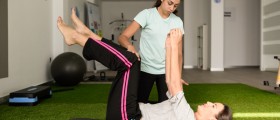
About Drop Foot
Drop foot is a term used for patients who are having difficulty lifting the front part of one of their feet. Since one is not able to lift the affected foot it is dragged while walking. The problem is serious and is more functional than aesthetic. The condition typically affects one foot.
There are several causes of drop foot. In the origin of the problems there are two possibilities - neurological damage to the nerve innervating the muscles of the lower leg and the foot and damage to the muscles themselves. Furthermore, the condition may develop due to certain anatomical abnormalities.
People suffering from drop foot face difficulty lifting the front part of the foot. This is mainly the only sign they are dealing with. However, such patients also slap their foot onto the floor during walking and this may lead them to raise their thigh as if they were climbing stairs. And finally, some patients additionally complain about pain, weakness and numbness of the affected foot.
Drop foot develops as a consequence of weakness of the muscles in charge of lifting the front part of the foot. Such weakness is usually associated with damage to muscles that control movement of the ankle and toes. Furthermore, neurological damage to different nerves starting from the lower spine and ending with certain leg nerves is another cause of the condition.
Therapy for Drop Foot
Treatment for drop foot depends on the underlying cause. This is why prior to choosing the correct treatment modality it is essential to perform certain tests and exams and identify the damage or anatomical abnormality responsible for the condition. In case the underlying cause is simply untreatable the person ends up with permanent foot drop.
Specific treatment modalities for the condition include braces or splints, physical therapy, nerve stimulation and surgery.
Braces or splints are amazing. They can fit into the shoe and hold the foot in the correct position. Physical therapy is indicated in patients who can still restore the lost function of the affected muscles. This way the affected muscles become strong again and the condition improves. Nerve stimulation is usually used in patients whose problem is a complication of stroke. The device (battery-operated electrical stimulator) is either strapped to the leg or it can be implanted in the leg. And finally, if none of the previously mentioned is effective the patients will definitely undergo surgery. By strengthening leg muscles and fusion of the ankle and foot bones walking difficulties can be significantly improved.

















Your thoughts on this
Loading...